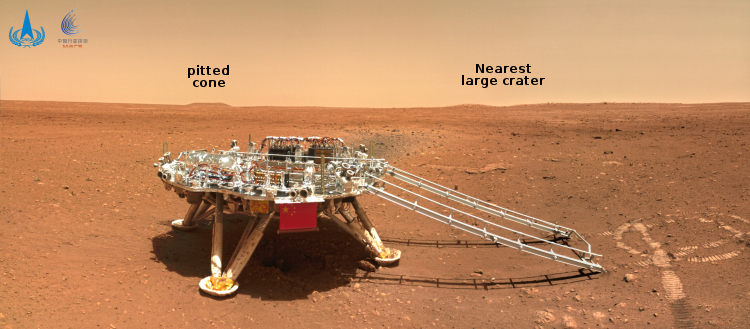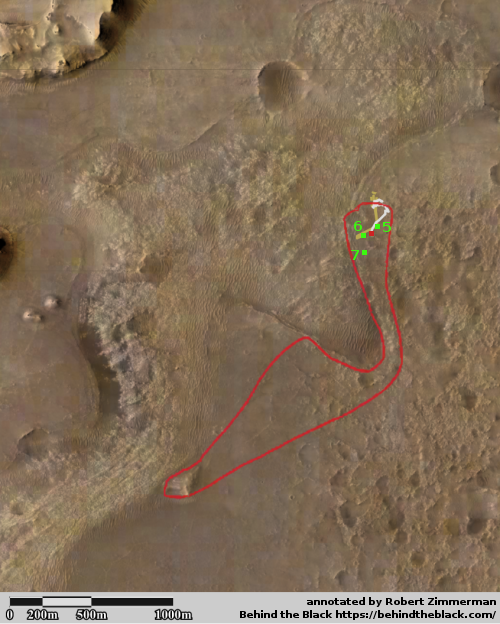SpaceX successfully launches GPS satellite for Space Force
Capitalism in space: SpaceX today successfully launched a new GPS satellite for the Space Force.
As I post this the second stage has not yet deployed the satellite, though it is in orbit. UPDATE: As expected the satellite has been successfully deployed into its proper orbit.
This was the first Space Force launch using a reused Falcon 9 first stage. The stage, making its second flight, successfully landed on the drone ship, broadcasting the absolutely best video ever of such a landing, with the cameras on both the stage and the drone ship working without distortion throughout the landing to touchdown. The live stream is embedded below the fold, with that landing at 8:34 minutes after launch.
The two fairing halves are new but their pick up method for reuse has been streamlined:
For this mission, a new vessel has joined SpaceX’s oceangoing recovery fleet. HOS Briarwood will attempt to recover Falcon 9’s payload fairing halves after they splash down in the Atlantic Ocean. Similar in size to Shelia Bordelon, the previous temporary fairing recovery vessel, HOS Briarwood can be booked as a “flotel” and features an enormous crane, along with seemingly just enough deck space to support two recovered fairing halves.
Apparently, allowing the halves to land directly on the ocean surface and act as floating boat hulls until the ship can pick them up on a single ship, using a crane, is now the recovery method. There is also the hint that SpaceX might also be planning to sell tickets on this ship for people who wish a vacation watching that fairing recovery operation.
The leaders in the 2021 launch race:
19 SpaceX
17 China
8 Russia
3 Northrop Grumman
The U.S. now leads China 27 to 17 in the national rankings. Note: The average number of American launches per year during the 21st century (from 2000 to 2020) was 22. The U.S. has now topped that average by five launches, and the year is not even half over.
» Read more
Capitalism in space: SpaceX today successfully launched a new GPS satellite for the Space Force.
As I post this the second stage has not yet deployed the satellite, though it is in orbit. UPDATE: As expected the satellite has been successfully deployed into its proper orbit.
This was the first Space Force launch using a reused Falcon 9 first stage. The stage, making its second flight, successfully landed on the drone ship, broadcasting the absolutely best video ever of such a landing, with the cameras on both the stage and the drone ship working without distortion throughout the landing to touchdown. The live stream is embedded below the fold, with that landing at 8:34 minutes after launch.
The two fairing halves are new but their pick up method for reuse has been streamlined:
For this mission, a new vessel has joined SpaceX’s oceangoing recovery fleet. HOS Briarwood will attempt to recover Falcon 9’s payload fairing halves after they splash down in the Atlantic Ocean. Similar in size to Shelia Bordelon, the previous temporary fairing recovery vessel, HOS Briarwood can be booked as a “flotel” and features an enormous crane, along with seemingly just enough deck space to support two recovered fairing halves.
Apparently, allowing the halves to land directly on the ocean surface and act as floating boat hulls until the ship can pick them up on a single ship, using a crane, is now the recovery method. There is also the hint that SpaceX might also be planning to sell tickets on this ship for people who wish a vacation watching that fairing recovery operation.
The leaders in the 2021 launch race:
19 SpaceX
17 China
8 Russia
3 Northrop Grumman
The U.S. now leads China 27 to 17 in the national rankings. Note: The average number of American launches per year during the 21st century (from 2000 to 2020) was 22. The U.S. has now topped that average by five launches, and the year is not even half over.
» Read more











